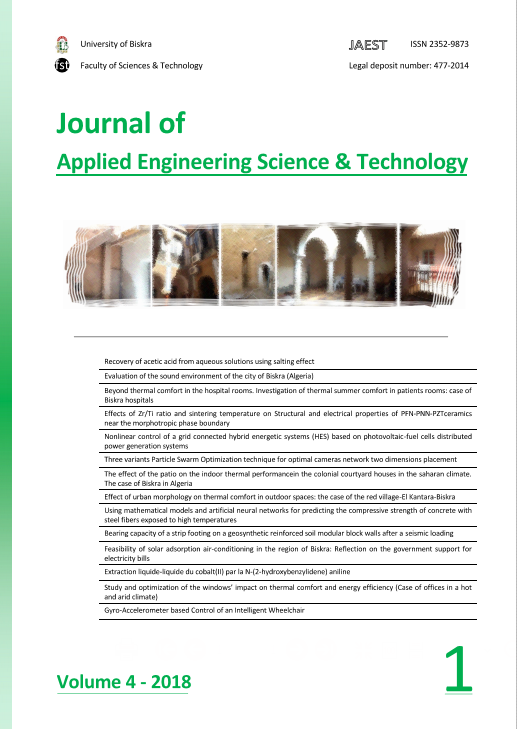Recovery of acetic acid from aqueous solutions using salting effect
DOI:
https://doi.org/10.69717/jaest.v4.i1.64Keywords:
Acetic acid recovery, Liquid-liquid equilibrium, Salting effect, Sodium chloride, Sodium sulfateAbstract
The application of salting effect to isolate an organic acid, particularly Acetic acid, from aqueous solution is reported. In fact the presence of a salt can influence the solubility of a compound by either increasing it or decreasing it, leading to Salting-in and Salting-out, respectively. The addition of a salt in an aqueous solution introduces ionic forces which affect liquid-liquid equilibrium and which influence directly the distribution coefficient of the solute. The effect of NaCl and Na2SO4 on the liquid-liquid equilibrium data of the ternary system (Water+ Acetic Acid+ Dichloromethane) at a temperature of 293.15 K and an atmospheric pressure is studied experimentally in this work. The mass fractions of salt in the total mixture are 5%, 10% and 20%. It is noted that the equilibrium between phases is modified preferably to the extracted phase and the salting-out in the case of sodium sulfate is more significant than the effect of chloride.
Downloads
Downloads
Published
Issue
Section
License

This work is licensed under a Creative Commons Attribution-NonCommercial 4.0 International License.













